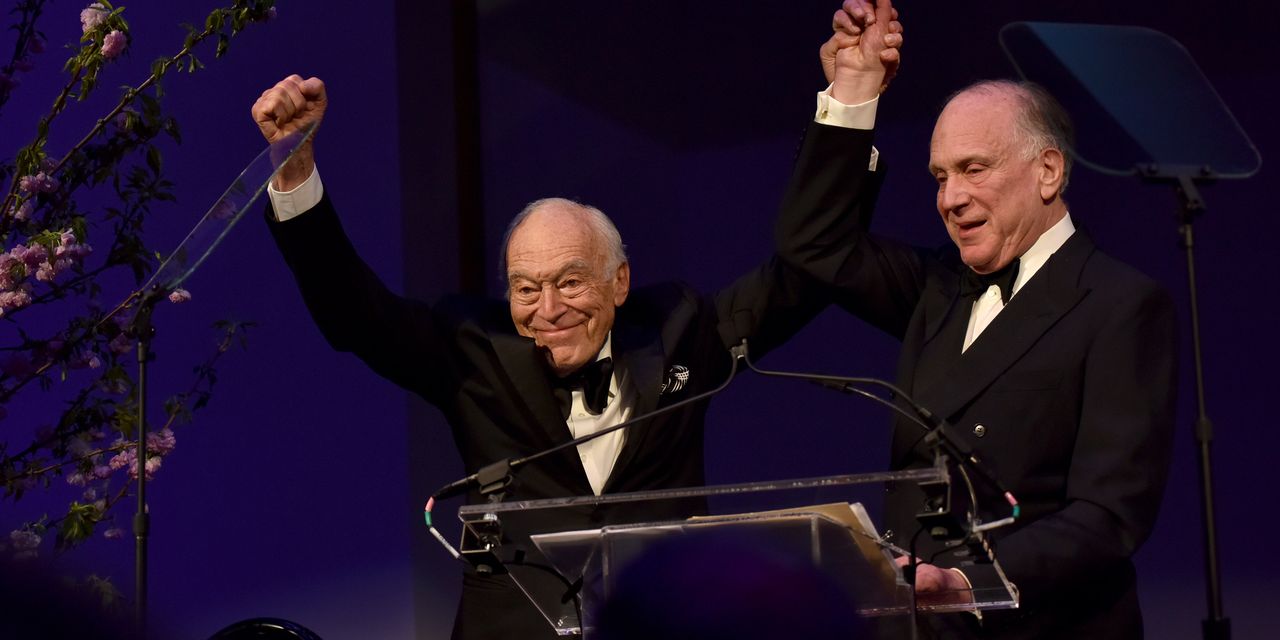Billionaire brothers Leonard and
Ronald Lauder
and their children donated a combined US$200 million to the Alzheimer’s Drug Discovery Foundation this week to accelerate research and drug development into the prevention and treatment of the disease.
The donation—the largest single gift to ADDF by the Lauder family—is being given on the heels of the U.S. Food and Drug Administration first approvals of Alzheimer drugs for use in humans, and on the cusp of new results that could lead to approval of a third drug, says Mark Roithmayr, CEO of ADDF.
This is a “stunning gift” that comes at “the perfect time,” Roithmayr says. It will “change how the public ages and interacts with aging.”
The Lauder brothers co-founded ADDF in 1998 in honor of their mother, Estée Lauder, with US$100 million she left for them “to do something about Alzheimer’s,” he says.
With this latest gift, the Lauders have donated more than US$500 million to ADDF to fund scientific innovations to prevent and treat the disease. Contributing to the latest donation are Leonard’s sons,
William Lauder
and Gary Lauder, and Ronald’s daughters, Aerin Lauder Zinterhofer and
Jane Lauder.
The recent drug approvals are focused on removing the protein amyloid plaques that affect memory and other brain functions in Alzheimer’s patients. The ongoing approvals of these drugs is a huge step forward. But they are “around 30% effective in lowering cognitive decline,” Roithmayr says. “We still need to develop drugs for the other 70%. That’s where the Lauder gift comes in.”
The focus of ADDF’s efforts for the last decade—since anti-amyloid treatments left academia and have been pursued by pharmaceutical companies—is on the so-called biology of aging.
Different biological pathways such as genetics and cardiovascular systems that contribute to aging may contain signals, or markers, pointing to the future development of Alzheimer’s. ADDF, backed by other philanthropists including
Bill Gates,
Jeff Bezos,
and Mackenzie Scott, has funded the US$100 million development of a “diagnostics accelerator,” to find these so-called biomarkers.
Once these markers can be identified, treatments can be developed. It’s then conceivable a decade or so from now that an individual could receive a combined drug therapy—similar to those received by cancer patients—that includes anti-amyloid drugs in addition to drugs that address specific biological markers, Roithmayr says.
“We have been funding these different pathways of aging, looking at if something goes wrong, how can we either prevent it from going wrong or fix it,” he says. The Lauder donation, he adds, will help accelerate this work currently occurring in 75% of all existing clinical trials addressing the disease.
When the Lauder brothers established ADDF 25 years ago, they set it up as a venture philanthropy instead of a grant-making organization so they could invest in academics and biotechnology and funnel any returns back into science.
The organization so far has been able to reinvest US$30 million from US$300 million in investments. These investments include initial funding for an imaging scan to diagnose Alzheimer’s. The Amyvid PET scan, as it’s called, has since been used in clinical trials to study the effectiveness of anti-amyloid drugs on patients who have Alzheimer’s.
What’s hopeful about the Lauder gift is that it included contributions from the third generation of the family. Even though they each have their own causes and interests, they pulled “together for this one thing because they believe what Estée started, they want to finish,” Roithmayr says.
While the gift is expected to fund scientific research for the next 15 years, the hope is “it’s going to spur others to contribute so that 10 to 15 years we can cut down to five to 10 years,” he says.
Read the full article here










